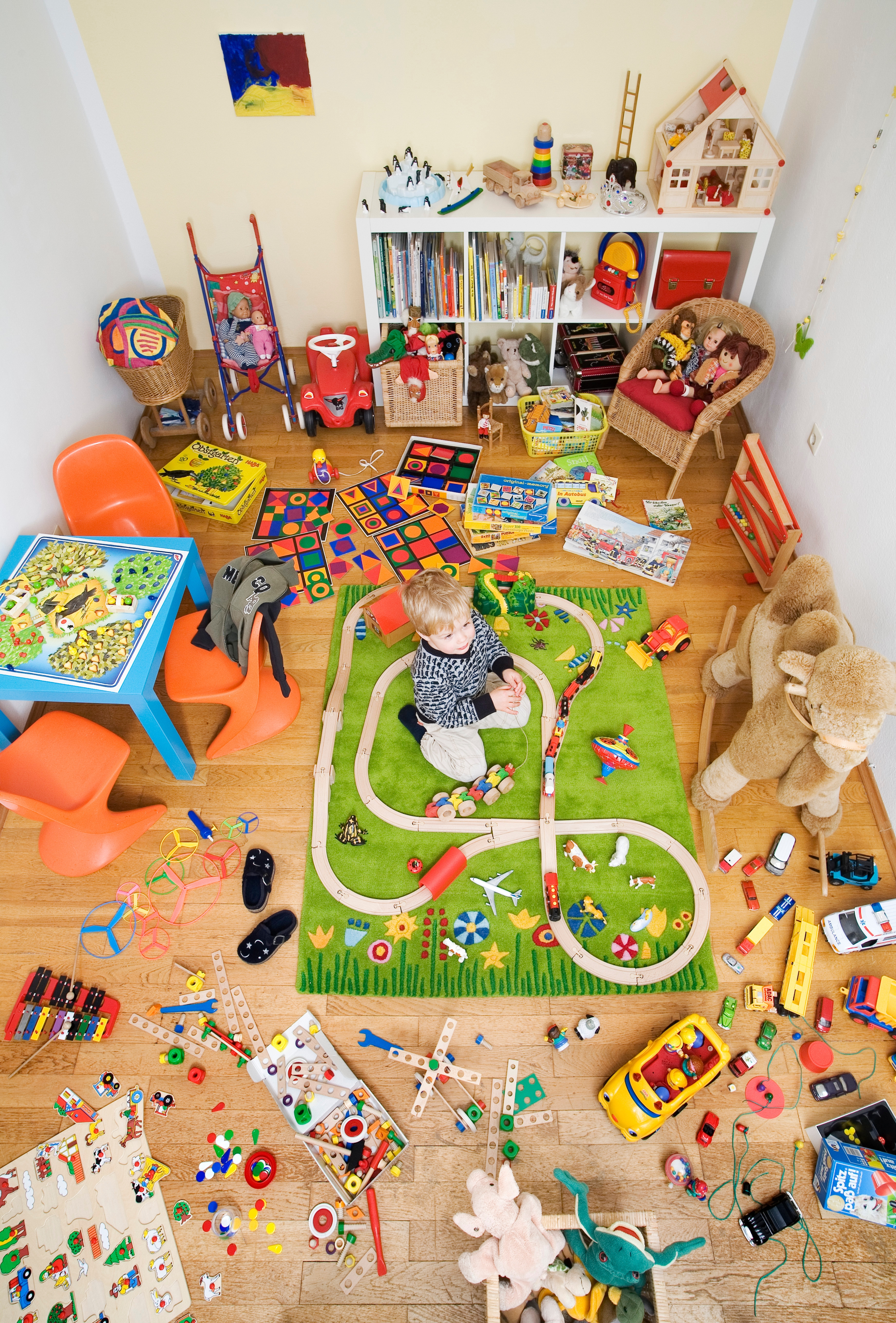Decluttering your Playroom: Making Space for Fun!
—
September 20th, 2024

Before you begin organizing, think about how the playroom should function. Is it primarily for free play, reading, or arts and crafts? Decide what activities the room should support and create designated areas for each. This way, every part of the room has a purpose, making it easier for your child to clean up after themselves and use the space productively. The key to organizing a playroom is to sort toys and items into categories. Create piles for toys, books, art supplies, games, and puzzles. This helps you see what you have, what's being used, and what might be excess. Encourage your child to help with this process so they can decide what they want to keep and what they've outgrown.
Once sorted, set up zones to make organizing smoother:
- Keep: Toys and items your child uses regularly.
- Donate: Gently used toys or games that are no longer age-appropriate.
- Store: Items like seasonal toys, large games, or anything that doesn't need to be out all the time.
- Trash: Broken toys, missing puzzle pieces, or worn-out art supplies.
Organizing a playroom by zones can make the space more functional and fun. Divide the room into different areas based on activities. These designated areas encourage kids to focus on one activity at a time and make cleanup easier by keeping similar items together. By adding tubs, you can keep the toys in the correct zone..
It's easy for a playroom to become overcrowded with toys, overwhelming both parents and children. To keep things tidy and manageable, try using a toy rotation system. Keep a limited number of toys on display and store the rest in labeled bins or a self-storage unit. Every few weeks, swap out the toys to give your child something fresh to play with. This keeps things exciting while avoiding clutter.
Another way to keep the playroom organized it to make it easy for your child to stay organized by using kid-friendly storage solutions. Clear bins, baskets, and low shelves allow them to see and access their toys easily. Label each bin or container with pictures or words so they know exactly where everything goes. For larger items, such as stuffed animals or dress-up clothes, consider using soft baskets or bins that are safe for children to handle. Maximize space by utilizing wall-mounted storage like shelves or hanging organizers. These can store books, puzzles, and smaller toys without taking up floor space. A playroom is their space, so it's important to involve your child in organizing it.
Let them help decide where toys and books should go and encourage them to participate in cleaning up each day. Children are likelier to keep the room tidy and take pride in their space during the process. You can even turn it into a game by setting a timer or playing their favorite cleanup song to make it fun!
Kids grow quickly, and their interests change just as fast. So make decluttering a regular habit to prevent the playroom from becoming cluttered again. Go through the toys and supplies every few months, and donate items your child no longer uses or has outgrown. Regular decluttering ensures that the room stays functional and that your child's interests are always reflected in the items they access. There is no point in keeping toys they no longer like or never play with. With a smaller number of toys that they play with, your kids and playroom will be happier!
A child's playroom should be a place of creativity, fun, and learning—but it can quickly turn into a cluttered mess. Between toys, art supplies, and games, the room can become overwhelming for both kids and parents. Organizing the playroom can bring order to the chaos, create more space for play, and make it easier for kids to find and enjoy their favorite things. Here's how to transform your child's playroom into a tidy, functional space that inspires creativity and fun.
The key to keeping a playroom organized long-term is consistency. Create a simple cleanup routine at the end of each play session or before bedtime. A few minutes of putting toys back in their bins, wiping down surfaces, and organizing books can prevent the room from getting out of control. You can even make it a daily responsibility for your child, teaching them to take ownership of their playroom.
If the playroom is overflowing with toys, consider using a self-storage unit to hold items your child doesn't need immediate access to. This could include seasonal toys, bulky items, or family games that take up too much space. Using a storage solution can help keep the playroom tidy without sacrificing any beloved items that might be used later.
Organizing a child's playroom doesn't have to be a daunting task. You can turn a cluttered room into a clean and inspiring space by sorting, creating play zones, and using smart storage solutions. Involving your child in the process teaches them valuable lessons about organization, responsibility, and taking care of their belongings. With a little effort and the right strategies, you can create a playroom that both you and your child will love! Ready to start? Grab some bins, make a plan, and transform that playroom today!
Stash It, Stack It, Store It: The Self Storage Chronicles
